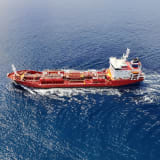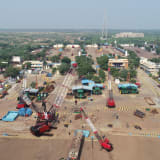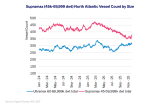
We turn our attention to the big ships within dry, as it is reported this week that Mitsui O.S.K Lines (“MOSK”) has placed a new series of newbuilding orders for five Dual Fuel LNG Newcastlemax’s (NCM’s). Two of these vessels are said to be constructed at Nihon ShipYard (in its Imabari facility) and a further three at Qingdao Beihai Shipyard.
It is no longer news that MOSK will be directing its fleet renewal efforts towards alternative green propulsion vessels, having set their ambitious decarbonization target of net zero by 2050. Provided that it is handled safely without slippage and bunkering economics aside, LNG as a fuel has the capability of reducing carbon emissions by 25%. In addition, LNG fuel has the added benefit of removing SOx emissions fully and NOx emissions by approximately 85%. The group considers LNG fuel as one of the useful decarbonization tools available at its disposal, and has since placed orders for 13 Cape/NCM bulkers, 2 Coal Carriers, 13 car carriers and 4 VLCCs, taking the total tally to 32 vessels. It is also important to note that this new series of NCM’s are ordered on ‘speculation’ without any supporting project charter. This further illustrates the group’s commitment as pioneers to lead the way towards building a more sustainable world.
Much of the orders that we have seen in the past couple of years for the Capesize/NCM bulk segment carries alternative fuel propulsion elements (mainly LNG and Ammonia-ready). This is turning out to be somewhat a key driver when considering investing in newbuildings for this larger segment.
The Cape/NCM segment has seen an overall decline in newbuilding orders in the last two years due to high prices across the board for drybulk vessels. The increase in prices appears to be much more significant for larger ship types in percentage terms. Shipowners are therefore hesitant to invest due to the high capital outlay alone.
The segment is also very much a niche one that is controlled by the several major key players. Critical mass therefore becomes a key to operate efficiently, and hence profitably, particularly in this sector. The high volatility, as shown in the past month, would often scare off tonnage providers targeting stable returns over a long period of time. In times of high prices like what we’re experiencing now, shipowners tend to prefer a high-quality counterpart as the long-term rates tend to be historically high. However, charterers are equally concerned if it is the right timing to take in newbuildings at high rates when deliveries are well into 2027 and are therefore reluctant to take such a position.
The high newbuilding prices, coupled with lack of long-term project charters from the miners, traders and/or major operators at charter rates that make economic sense to owners, is making investing in this segment pretty much an impossible task for Japanese tonnage providers today.
That said, with the lack of conventional fueled vessel orders that are supported by long-term charters, and more speculative new orders in alternative fueled vessels, the sector is potentially shaping up to be the leader for green shipping within the drybulk market. Whilst it can be argued that it will probably take at least another generation to phase out the older conventional fueled vessels with older technology before 2050, it is still promising to see how this unfolds in the near future as more of these green big vessels hit the waters.
By Eugene Quek, Partner & Head of Projects in Japan, SSY
Articles
You may also be
interested in
View allGet in touch
Contact us today to find out how our expert team can support your business














